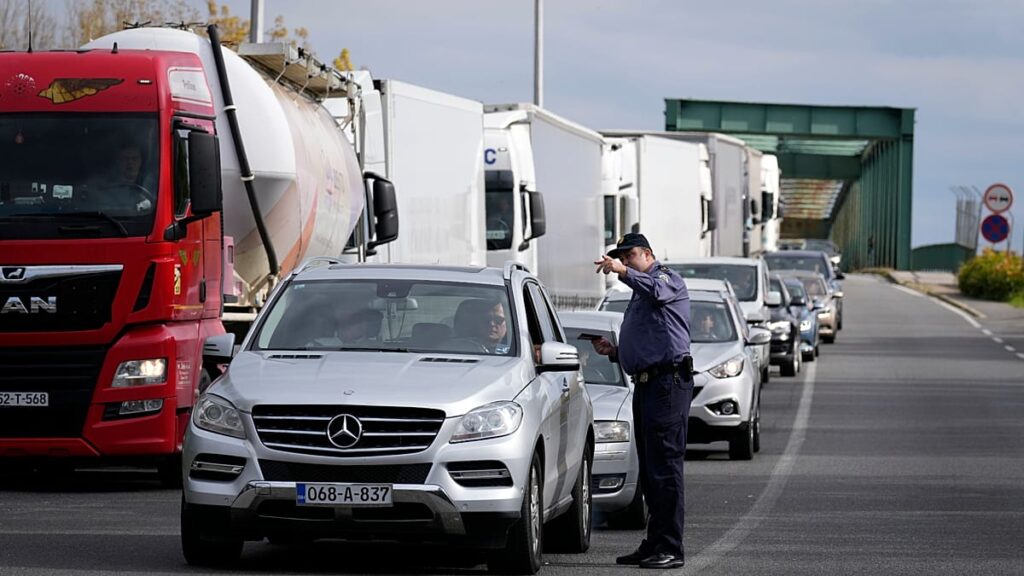The roll-out of the EU’s new Entry/Exit System (EES) for tourists at Dover has been paused, according to port officials.
The digital border system was due to come into force at the Port of Dover for tourist traffic on Saturday, 1 November.
The scheme is already live for ferry passengers in coaches, and was introduced on 12 October for coaches and freight.
Dover processing for cars could be 6 times longer once EES launches
For the time being, tourists travelling in cars still won’t be subject to EES checks at Dover.
“Whilst Port of Dover’s facilities will be ready for 1 November, we are being guided by French authorities as to when we will activate,” Doug Bannister, chief executive of the port, said.
The EU’s new border check system requires third-party nationals, including British citizens, to have fingerprints and photos taken as part of efforts to bolster security in the bloc.
While most travellers will undergo EES checks on arrival at airports or land borders in the Schengen Zone, passengers departing from London’s St Pancras railway station or Eurotunnel’s Folkestone terminal, as well as the Port of Dover, are subject to checks upon leaving the UK.
Currently, it takes port authorities around 60 seconds to process each car at the border.
With the EES in place for tourist traffic, this will mean passengers having to get out of their vehicles and register at dedicated electronic kiosks.
This could mean processing will be six times longer for cars, the Port of Dover has previously warned.
The EES is being rolled out gradually across EU borders to give countries time to make sure the new technology is installed and travellers are prepared.
“Following the successful go-live for coaches and freight on 12 October, we continue to work closely with our French technology provider and border authorities towards starting the EES process for car passengers,” Bannister said of Dover.
“We have asked for a minimum of two weeks’ notice to start in order to give us time to inform travellers and install the necessary signage.”
EES launch a ‘complete muddle’
The EES officially launched on 12 October but was initially rolled out at only a few airports in the EU. The deadline for being fully operational is 10 April next year.
The border check system has been dogged by delays and confusion over how it will work in practice.
Tom Jenkins, chief executive of European travel association Etoa, spoke out about the uncertainty prior to the launch.
“We’re not getting any information at all. All they [the EC and EU member states] are saying is it will be rolled out from October 12 – it’s not remotely clear who will be doing it,” he said.
“It’s a complete muddle. They can’t have a partial system, which is what they’re trying to do – to start enrolment, to get the electronic record up even if it’s not a proper record. So, they’re going to register people as well as stamping their passport.”
A survey by Holiday Extras found that 82 per cent of respondents were still unclear as to how the new EES will impact trips, with 35 per cent unaware that the new rules came in on 12 October.
Nearly one in five holidaymakers has already changed or cancelled travel plans, with many citing worries about border delays where the EES is in place.
“The concern will be, when you have flights arriving at one of these airports, at the same time, it’s already a bottleneck – this is going to add even more of an issue,” Julia Lo Bue-Said, chief executive of the Advantage Travel Partnership, told the BBC.
She added that travellers should allow three to four hours to get through the new checks.
Read the full article here


